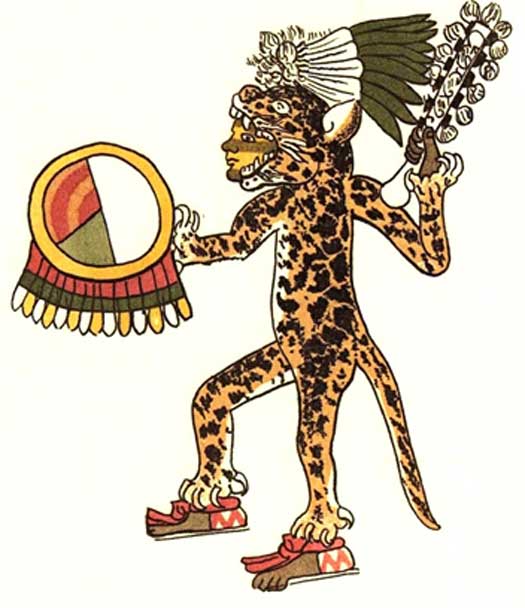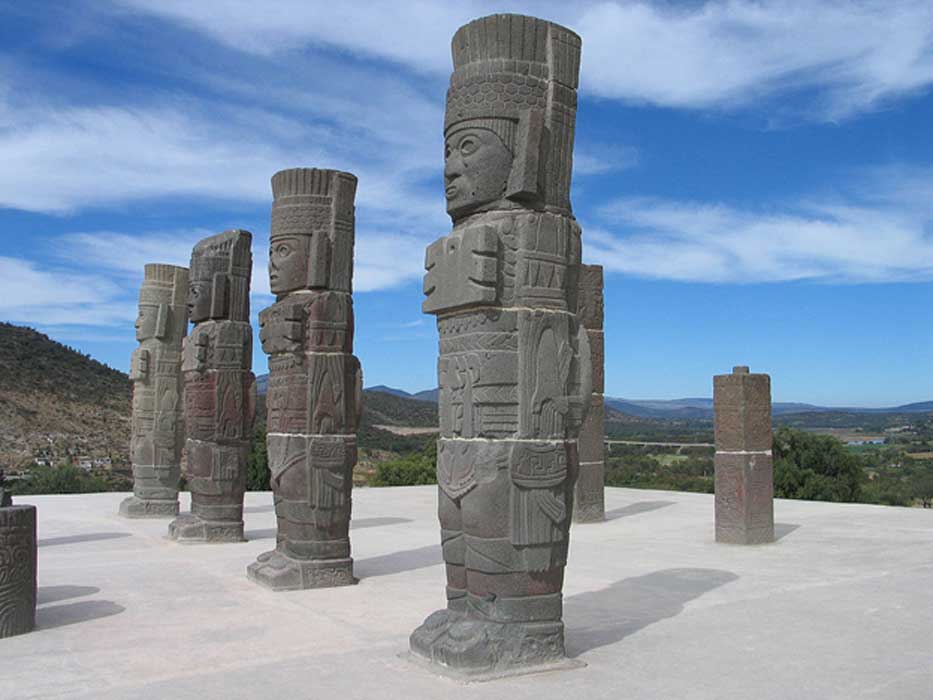Toltecs: Fierce Warriors Who Changed the Face of Mesoamerica for Good
The Toltec culture was a pre-Columbian culture that dominated the area of what is today central Mexico from the 10 th to the 12 th centuries AD. They ruled the region from their capital of Tollan (known today as Tula), and were renowned as fierce warriors. Their rise to power and the beginning of the Toltec empire marked the start of militarism in Mesoamerica. Be that as it may, the Toltecs were also skilled builders and craftsmen, as seen in the amazing architecture and artwork that they left behind.

Pyramid in the great city of Tula (CC by SA)
The word ‘Toltec’ may be literally translated to mean ‘reed person’ and may be taken to mean ‘urbanite’ or ‘cultured person’. The name of this culture is derived from its capital, Tollan (Tula), which means ‘Place of the Reeds’. Some scholars, in particular the 17 th century native historian Fernando de Alva Cortés Ixtlilxóchitl, claimed that the Toltecs were one of the groups of people who had lived in the great city of Teotihuacan.
Where did the Toltecs come from?
During the early part of the 6 th century AD, Huémac, a legendary chief, is said to have led the Toltecs southwards in search of a new settlement. Nowadays, however, scholars are of the opinion that the Toltecs were more likely to have migrated into the region of central Mexico from the northwestern desert, perhaps during the 9 th or early 10 th century AD. The connection with Teotihuacan was added later on so that the Toltecs could portray themselves as the successors of this great city.
Toltec Warriors
According to tradition, the Toltecs, led by Mixcóatl (meaning ‘Cloud Serpent’) sacked and burned Teotihuacan around 900 AD. Indeed, the Toltecs were famed as warriors, and it was under them that militarism was introduced into Mesoamerica. For instance, the Toltecs had various military orders, including that of the Jaguar and the Eagle, which were introduced to the Maya, their southern neighbors.

Jaguar warrior from the Codex Magliabechiano (public domain)
In a way, Toltec warfare may be said to have had religious aspect to it. The Toltecs were worshippers of the god Quetzalcoatl, and they sought to spread his cult amongst the peoples they defeated in war. This effort was successful, considering the fact that Quetzalcoatl’s cult spread as far south as the Yucatan peninsula, where he was worshipped by the Maya as Kukulcan. Moreover, in the pantheon of the Aztecs, who may be considered to be the successors of the Toltecs, Quetzalcoatl was one of the major gods.
- The Rise of Quetzalcoatl: From Plumed Serpent to Creator God
- Bearded Gods of the Americas Were Jesus Resurrected?! Maybe. But Why is the Plumed Serpent Ubiquitous?
- Once Hidden in Plain Sight and Surprisingly Ignored: The Great Pyramid of Cholula
Master Builders
Apart from warfare, the Toltecs are also considered to have been great builders and artists. For instance, in addition to the great city of Tula, the architectural influence of the Toltecs is visible in the great Maya city of Chichen Itza. In the past, it was thought that the Toltecs had conquered this city. A re-assessment of this view in more recent times has led to the speculation that it may have been exiled Toltec nobles who brought the Toltec influence to the city when they settled there. The skill of the Toltec craftsmen is also seen in the variety of artwork they produced, including metalwork, sculptures depicting an assortment of subjects, as well as the peculiar reclining Chac Mool figures, which are thought to be associated with the rain god Tlaloc.

cIt is still unclear as to what brought about the end of the Toltecs, though war and violence may have been a main factor. At the Toltec capital of Tollan, one of the excavated buildings has been called the ‘Burnt Palace’, as evidence of burning had been found there, indicating that Tollan was sacked, and burnt to the ground. Archaeologists have dated this event to the early part of the 12 th century AD. It is unclear, however, as to who did it.
Some have suggested that a long period of drought caused the mass migrations, which disrupted the existing way of life. It is possible that these newcomers, which included the Chichimecs, the Mixtecs, and the Aztecs, destroyed the Toltecs. Alternatively, it has been suggested that the destruction may have been caused by civil wars or internal strife.
Top image: Magnificent columns in the form of Toltec warriors in Tula (CC by SA 3.0)
By Wu Mingren
References
Delsol, C., 2010. Olmecs to Toltecs: Great ancient civilizations of Mexico. [Online]
Available at: https://www.sfgate.com/mexico/mexicomix/article/Olmecs-to-Toltecs-Great-ancient-civilizations-of-2387656.php
Kessler Associates, 2018. Toltecs (Mesoamerica). [Online]
Available at: http://www.historyfiles.co.uk/KingListsAmericas/CentralToltecs.htm
Minster, C., 2017. 10 Facts About the Ancient Toltecs. [Online]
Available at: https://www.thoughtco.com/facts-about-the-ancient-toltecs-2136274
The Editors of Encyclopaedia Britannica, 2016. Toltec. [Online]
Available at: https://www.britannica.com/topic/Toltec
www.crystalinks.com , 2018. Toltec. [Online]
Available at: http://www.crystalinks.com/toltec.html




















Comments
We. An learn so much from ancient history, learning from today has been devised
Mary Madeline